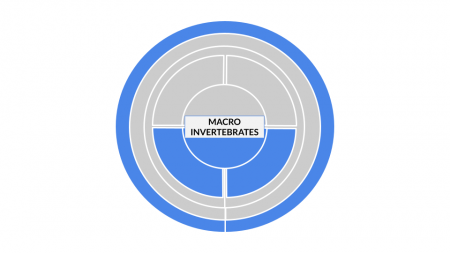Difference between revisions of "Macroinvertebrates"
From Sustainability Methods
Oskarlemke (talk | contribs) |
Oskarlemke (talk | contribs) |
||
| Line 30: | Line 30: | ||
==Netting== | ==Netting== | ||
=== What the method does === | === What the method does === | ||
| − | [[File:Fig1 TeichkescherMACROINVERTEBRATES | + | [[File:Fig1 TeichkescherMACROINVERTEBRATES|thumb|Figure 1. Pond net for catching invertebrates. It is important that the collecting bag is long enough to throw it over the brim to prevent invertebrates from escaping. Source: https://www.der-gartenteich.com/teichkescher-klappbar-art.nr.-84296?sPartner=google-de-ts&c=172&gclid=Cj0KCQiA1sucBhDgARIsAFoytUvZORDGHrnxv01LJzM4d4JWxv9RoA5PRK0qP6bboR64KUU2WktN_dgaArTnEALw_wcB ]] |
| − | |||
---- | ---- | ||
Revision as of 14:06, 18 April 2023
| Method categorization | ||
|---|---|---|
| Quantitative | Qualitative | |
| Inductive | Deductive | |
| Individual | System | Global |
| Past | Present | Future |
In short: Netting, kick sampling and taking benthic cores are methods for collecting macroinvertebrate samples to obtain information about the water quality of a river, lake or pond.
| Netting | Kick sampling | Taking benthic cores | |
| Zone | nekton | riffles in nekton | benthal |
| Speed of water | slow | fast-flowing | still or slow-moving |
| Depth of water | shallow (pond nets), deep (tow nets) | shallow | shallow/ deep (using a boat) |
Netting
What the method does
File:Fig1 TeichkescherMACROINVERTEBRATES
Figure 1. Pond net for catching invertebrates. It is important that the collecting bag is long enough to throw it over the brim to prevent invertebrates from escaping. Source: https://www.der-gartenteich.com/teichkescher-klappbar-art.nr.-84296?sPartner=google-de-ts&c=172&gclid=Cj0KCQiA1sucBhDgARIsAFoytUvZORDGHrnxv01LJzM4d4JWxv9RoA5PRK0qP6bboR64KUU2WktN_dgaArTnEALw_wcB
The author of this entry is Anna-Lena Rau.
